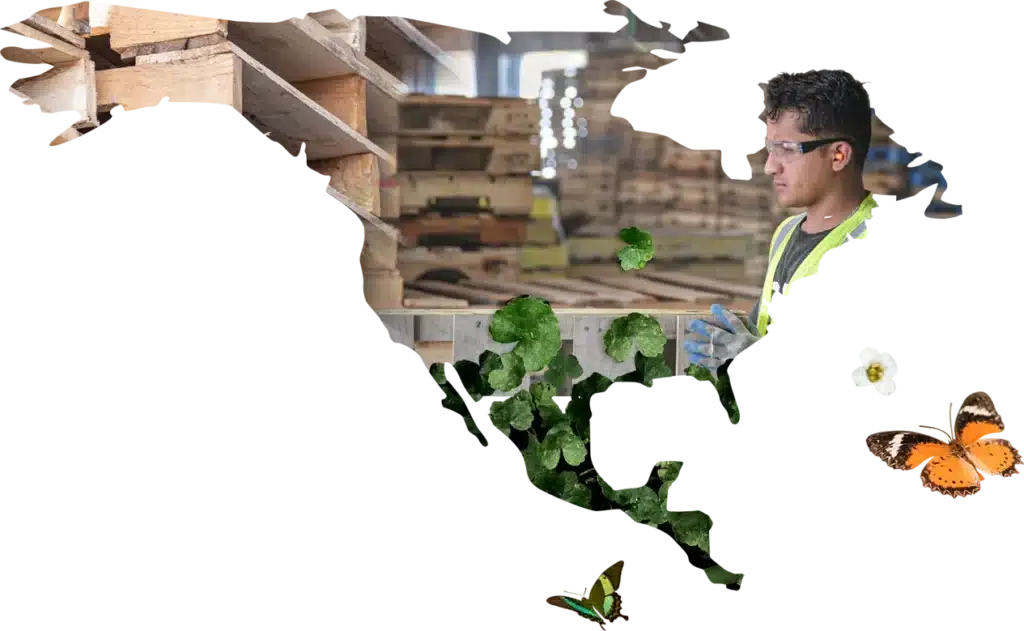Our Green Scorecard
Building a more sustainable world, one pallet at a time
Our vision is a world where supply chains produce zero wood waste, with a minimum negative impact on our climate and ecosystems.
To achieve our sustainability vision, Kamps has made significant investments at all stages of our “Sustainable Pallet Life-Cycle” to ensure we have the most comprehensive supply chain coverage for our customers and vendors.

1
Improved Carbon Footprint Analysis
In previous years, we calculated electricity usage based on spend and used approximations to calculate usage. For 2023, we made a conscious effort to improve the accuracy of our data and worked with utility partners to access exact usage numbers for our locations. For our mobile sources calculations, we also transitioned away from EPA guides and instead used Greenhouse Gas Protocol tools, a more widely used greenhouse gas accounting standard globally.
2
Green Energy Generation
One of our strategic “End of Life” disposal processes is the creation of Green Energy (i.e. renewable sources such as Biofuel). To achieve this, we transfer ground scrap pallets to co-generation plants that power municipalities, schools, and more. As an example, one of the co-generation plants that accept our Biofuel in Michigan can produce approximately 650 kWh of energy per ton of Biofuel, resulting in over 27,039 MWh of energy produced in 2023.
3
Carbon Emissions Avoidance
Our Sustainable Pallet Life-Cycle contributes to millions of metric tons of CO2 emission prevention. This is because the amount of carbon that is emitted during the process of repairing or remanufacturing a pallet is significantly lower than building a new pallet. Kamps’ carbon offset strategy is largely driven by this difference, with a focus on extending the life of a pallet to its maximum potential through minimal carbon emissions.



Total Number Recycled: Based on Kamps national network, including historical annual data post Kamps acquisition. | Trees Saved: Based on first-hand proprietary research performed by Kamps using lumber source data and internal manufacturing data. | Landfill Diverted: Assumes 18.5 kilograms per pallet on average and 100% of the pallets recycled would have otherwise been landfilled. | Carbon Off-Sets: Based on Version 13 of EPA’s WARM model for dimensional lumber.








